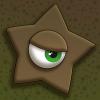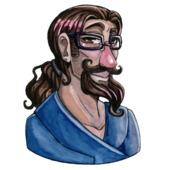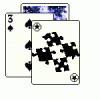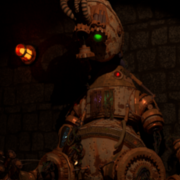I have two suggestions.
I find that sometimes, especially when making games as an act of learning, simply having a vague idea of what you want your game to be will sort of push you into the direction you need to go to learn something else. Let's say you eventually wanted this to be a zelda-esque type game, like others mentioned you'll want to add some more characters, then learn how to handle collision, then perhaps learn how to calculate projectile spells. You'll want to add in attack and damage. You'll want to learn how to save/load the game, etc. But, everything you learn, you'll find something else you'd like to add to it as well, and if you ever run out of things to learn, well, then your game is likely done 
It's a little haphazard, to be sure, and obviously having some sort of idea what order to learn things is a pretty good idea, but I find that flows kind of naturally. Obviously, you'd want to add NPCs before implementing collision, and set up your attack/damage functions before adding in projectile attacks. You should be pretty able to determine the order of what to learn, and it becomes apparent pretty quick if you're learning things out of order. It's pretty difficult, in my opinion, to learn things out of order, as if you don't know the prerequisites for how to do something, you'll know you need to step back and learn those first. I've spent many a weekend relearning mathematical concepts I'd forgotten 
It doesn't have to be the most original or mind-blowing idea for a game, but perhaps flesh out a vague outline for how you'd like it to end up. I'm still in this stage myself (the learning stage, I mean), but just giving yourself an end-goal of sorts will direct your learning process to a pretty good degree and ensure you're never out of things to do next.
The second thing is to keep a TODO list of sorts for your game and add things to it as you come across them. When you find yourself with time and unsure of what to do next, you can go over it and pick something that fits your mood  I find sometimes I'm in the head space to tackle a difficult challenge, but one that doesn't have much of a visual reward (optimizations, things heavy in math and such), and other times there are really simple things with a large payback game-wise. But, I find it's really easy to forget what things you can work on if you don't keep track of them.
I find sometimes I'm in the head space to tackle a difficult challenge, but one that doesn't have much of a visual reward (optimizations, things heavy in math and such), and other times there are really simple things with a large payback game-wise. But, I find it's really easy to forget what things you can work on if you don't keep track of them.
Anyhow, welcome and happy Halloween! 











